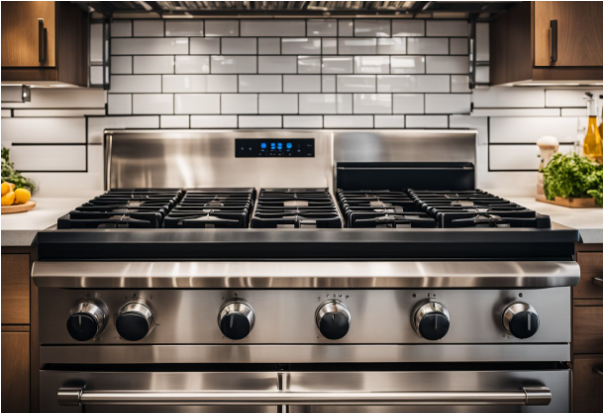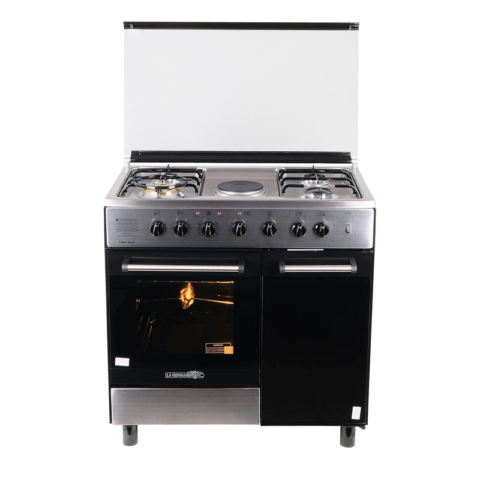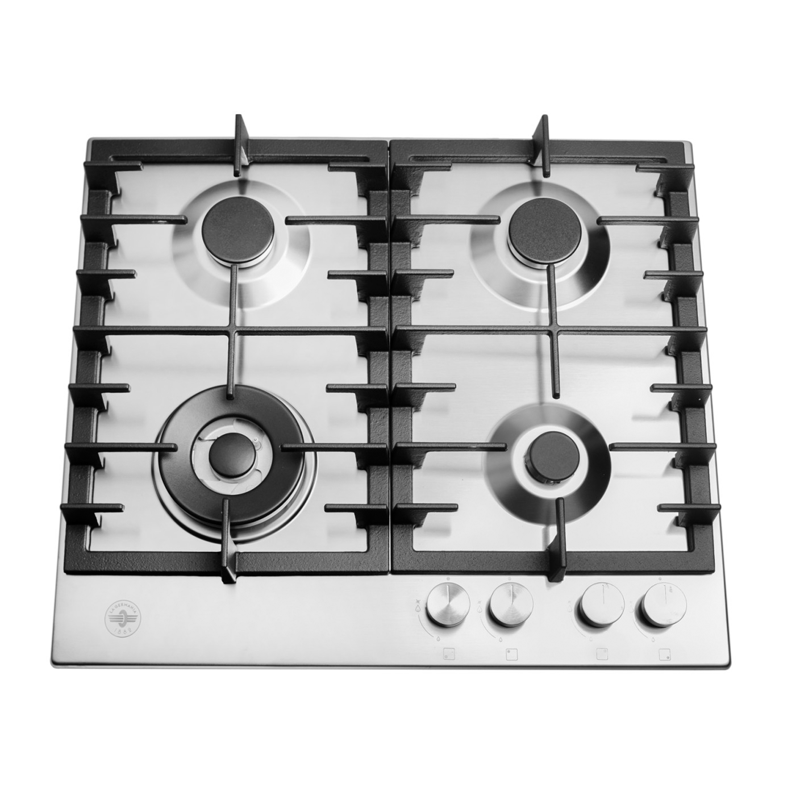Gas Range Buying Guide: Tips for Finding the Right Gas Range Size for your Kitchen
Choosing the right gas range size is crucial for any kitchen—whether you’re a casual cook or a culinary enthusiast, the size of your gas range is key to unlocking your kitchen’s full potential. The ideal size of a gas range typically depends on your cooking habits and available kitchen space. In this guide, we will outline the standard stove range sizes and key factors to consider when selecting your gas range. From cozy and compact models that slide effortlessly into small spaces, to grand, multi-burner beasts ready for your next dinner party, finding the right size can make all the difference.
And there’s more! Matching your cooking style to the right features, like oven capacity or burner output, also plays an important role when deciding on the perfect fit. By considering these elements, you can make an informed choice that complements your cooking lifestyle.
Kitchen ranges offer a variety of sizes and styles to fit different kitchen layouts and personal preferences. Whether you’re choosing between a kitchen range or a separate oven and cooktop setup, understanding the versatility of a range can help elevate your cooking experience and streamline your kitchen’s functionality.

Stoves vs. Ranges
Types of Kitchen Ranges
Kitchen ranges come in several types, each tailored to specific cooking preferences. Gas ranges provide instant heat and precise temperature control, appealing to those who value responsiveness in cooking.
Electric ranges often feature smooth glass tops that are easy to clean. They provide uniform heat but may require longer preheating times. Dual fuel ranges combine the benefits of both gas and electric options, providing gas burners with an electric oven.
Freestanding ranges offer flexibility in placement, while slide-in ranges provide a more integrated look with controls on the front.
Explore Anson’s collection of kitchen ranges.
Elevate Your Cooking Experience with Gas
Gas ranges have become a favorite among home cooks and culinary enthusiasts alike, and it’s easy to see why! The key benefit is heat control: gas ranges offer instant heat as well as more precise and responsive temperature control, allowing for quick adjustments that enhance cooking efficiency. The ability to see and feel the flame gives cooks a level of responsiveness that electric ranges simply can’t match. Plus, gas ranges often provide a more even cooking experience, making them ideal for everything from delicate sauces to hearty roasts. With their combination of speed, versatility, and culinary prowess, it’s no wonder gas ranges are the go-to choice for most chefs.
Standard Stove & Gas Range Sizes
Standard stove range size varies from compact, medium, and large sizes, accommodating various kitchen layouts and cooking needs. A standard gas range dimension’s width typically ranges from 75 to 90 cm, while compact ones can be narrower at around 50 to 60 cm. Heights are mostly consistent at 85 to 90 cm, to match the height of a standard kitchen countertop.
Standard Stove Range Sizes:
| Size (Width) | Typical Use |
| 50 or 60 cm | Small apartments |
| 80 cm | Fit for most homes |
| 90 cm + | Ideal for larger kitchens |
Compact Sizes
Compact gas range sizes are ideal for smaller kitchens or apartments. These gas ranges often come in 50 cm and 60 cm widths. Their smaller footprint and dimension allows for easy installation in tight spaces. Despite their size, many offer features like four burners and an oven, ensuring functionality. Compact gas ranges provide efficiency without sacrificing capability.
Medium Sizes
Medium gas ranges are a popular choice for typical home kitchens. About 80 cm in width, this dimension offers a balance of cooking space without overwhelming your kitchen.
Some medium ranges feature five burners, providing flexibility for various cooking techniques. The ovens often come with a capacity of 115 to 140L.
Large Sizes
Another very popular choice, large gas ranges cater to those who need ample cooking capacity and space. For families and avid cooks, these models generally measure around 90 cm in width.
They offer a spacious cooking surface area, often with six or more burners. The oven capacity varies, frequently exceeding 140L, ideal for roasts and multiple dishes at once. Some large ranges feature commercial-grade construction, enhancing durability and performance.
Finding Your Perfect Fit: Choosing the Right Size
Selecting the ideal gas range size involves balancing your kitchen space with your cooking needs. Here’s how to ensure your new range fits seamlessly and meets your culinary ambitions:
Evaluate Your Kitchen Space
- Measure the Area: Determine the space where the gas range will be installed.
- Consider Cabinet Dimensions: Check the height and depth of your cabinets for a harmonious fit with the gas range.
- Leave Clearance: Ensure ample space above the range for ventilation and nearby appliances.
- Assess Surroundings: Evaluate the distance to countertops and walls for safety and ease of movement.
Assess Your Cooking Needs
- Cooking Style: If you host dinner parties or cook large meals, opt for a spacious model with multiple burners.
- Household Size: For smaller households or occasional cooking, a compact range may suffice.
- Burner Space: Consider how often you use multiple burners simultaneously.
By carefully evaluating these factors, you can select a gas range dimension that perfectly aligns with your kitchen and cooking lifestyle.
Other Considerations
When it comes to selecting a gas range, the journey doesn’t end with just size and features. Several other factors can significantly influence your decision, including design and aesthetics, brand reliability, installation, and maintenance.
Design and Aesthetics: Style Meets Function
- Visual Appeal: The look of your gas range can dramatically enhance the overall ambience of your kitchen. From sleek, contemporary designs that feature stainless steel finishes to charming retro models adorned with vibrant colors, there’s a style to match every taste.
- Usability: Consider the layout and placement of knobs, burners, and controls as well—an intuitive design is ideal.
Make sure your choice reflects your personal style and complements your kitchen décor!
Brand Reliability: Trust in Quality
- Choose Established Brands: Opt for a reliable brand as they often provide better warranties and customer support, giving you peace of mind with your purchase. Brands like La Germania, Beko, and Fabriano are known for their high-quality craftsmanship and performance.
- Research: Check customer reviews and ratings to gauge the longevity and performance of different brands. Look for indicators of reliability, such as features like durable materials and advanced safety options.
Fuel Source
Ensure your home’s gas supply aligns with the range type you select. Check for natural gas or propane compatibility based on your existing setup.
Installation & Maintenance: Setting Up for Success
Familiarize yourself with the requirements for gas line connections and ventilation to avoid any hiccups during setup. While some ranges are designed for easy DIY installation, others may require professional help.
Regular maintenance is equally important; understanding the specific cleaning methods for your model can prolong its lifespan. A well-maintained range not only performs better but also prevents costly repairs down the line.
Explore Anson’s collection of kitchen ranges.
Features and Enhancements: Elevate Your Cooking Game
As you consider your options, don’t forget to explore the various features and enhancements that can make your cooking experience even more enjoyable. From different burner types to oven capabilities, each feature contributes to the versatility and efficiency of your kitchen.
Burner Types
Not all gas stove burners are made the same. There are various types to accommodate different cooking methods and styles. Some common burner types are:
- Standard Burners: Ideal for everyday cooking, these burners provide consistent heat levels for boiling, simmering, and sautéing.
- Power/High-Output Burners: Designed for quick boiling and high-heat cooking, these burners deliver more BTUs (British Thermal Units) for faster results.
- Simmer Burners: Usually the smallest burner on the stove, these burners maintain low heat for delicate tasks like melting chocolate or simmering sauces without burning.
Combining different types allows you to customize your cooking experience. Consider a range with additional features like a griddle or wok burner for added flexibility.
Oven Capabilities
Oven capabilities often define the overall performance of your gas range. Features to look for include:
- Convection Cooking: This oven feature circulates hot air for even cooking and faster baking. It’s particularly useful for roasting meats and baking pastries.
- Self-Cleaning Options: Many modern gas range ovens come with self-cleaning functions, making maintenance easier. You can choose between steam or high-heat cleaning methods.
- Multiple Cooking Modes: Look for built-in ovens that offer various cooking modes, such as bake, broil, or true European convection, for enhanced versatility.
These capabilities enable you to achieve specific cooking results and maintain your oven with less effort.
Additional Accessories
Accessories can significantly enhance your gas range’s functionality. Important accessories include:
- Griddles: An optional griddle is perfect for cooking pancakes, grilling sandwiches, or searing meats.
- Oven Racks: Adjustability in oven racks aids in accommodating larger dishes and improving airflow for even baking.
- Wok Grates: If you enjoy stir-frying, a wok grate can provide the necessary support for a round-bottomed wok.
Choosing the Right Type & Gas Range Size for You
When selecting a gas range, consider the space available in your kitchen. Measure the specific dimensions of the area where the range will be placed to ensure a proper fit. Once you have determined the size, you can select which type of gas range suits your needs best.

Freestanding
These ranges are versatile and easy to install. They can stand alone or fit between cabinets.
Conclusion
Choosing the right gas range is more than just a practical decision; it’s an exciting opportunity to elevate your culinary experience and transform your kitchen into a hub of creativity and flavor.
Think about your needs and preferences when selecting the gas range size. A well-chosen range enhances both usability and aesthetics in your kitchen. Review various models and features to find the best match for your cooking style. Prioritize quality and functionality to ensure the best value and optimal cooking experience.
By considering the gas range size, design, brand reliability, and essential features, you can choose a gas range that meets your cooking needs and enhances your kitchen’s aesthetic. Happy cooking!

